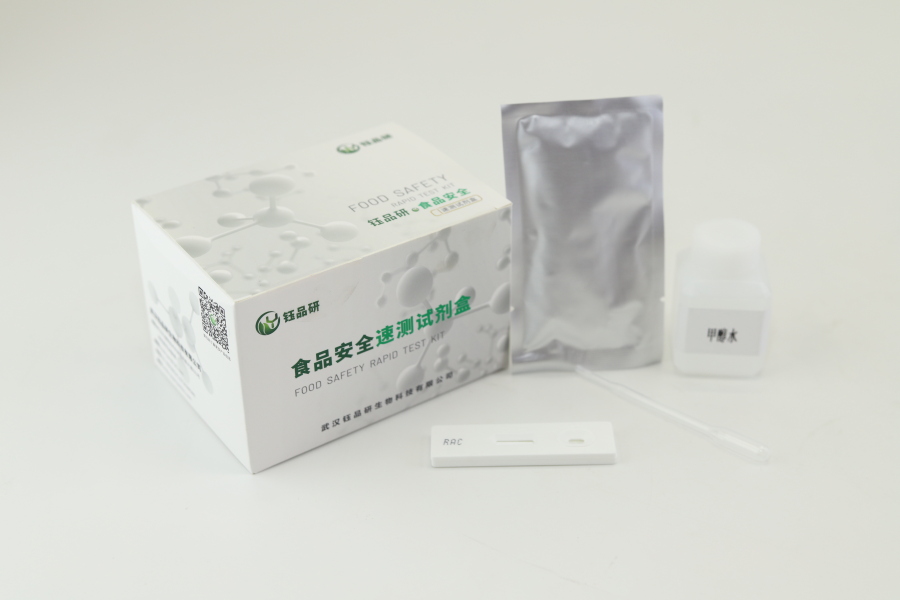
food safety is a major issue related to people's livelihood, and pesticide residue testing is an important part of food safety assurance, and the accuracy of its results directly affects the judgment of food quality. Among many pesticide residue testing items, the detection of abamectin and chlorothalonil often occurs in actual operation due to their particularity and universality, which affects the reliability of the test results. As a professional food safety rapid detection reagent manufacturer, Wuhan Yupinyan Bio has the responsibility and obligation to clarify these common misunderstandings for everyone and help improve the detection level.
First, a common misunderstanding about abamectin testing is that "as long as you follow the steps to add samples, the results will be accurate". In fact, the standardization of sample pretreatment is crucial to the test results of avermectin. For example, some operators fail to fully break up tissue cells during sample homogenization, or the pH value of the extract is not controlled in an appropriate range, which will lead to incomplete extraction of the target, resulting in false negative results. Wuhan Yupinyan Bio-produced avermectin rapid detection reagent, the instructions will indicate the key control points of the pretreatment in detail. Users must strictly follow to ensure that the target is effectively released and fully reacts with the reagent.
Secondly, in the detection of chlorothalonil, "ignoring the sample matrix effect" is another easy place to step on the pit. Chlorothalonil exists in different types of sample substrates (such as vegetables, fruits, grains), and its interaction with matrix components varies. Some inspectors are accustomed to using one pretreatment method to deal with all samples, which may lead to the failure to effectively remove interfering substances in the matrix, which in turn affects the specific identification of detection reagents and causes results to be biased. Wuhan Yupinyan Bio reminds you that for complex matrix samples, purification steps or sampling volume should be taken if necessary according to the recommendations of the reagent instructions to eliminate or reduce the interference of matrix effects on the detection results of chlorothalonil.
Furthermore, "rapid detection is the word'fast ', and the reaction time can be shortened at will" is also a common cognitive misunderstanding. Whether it is the rapid detection of abamectin, chlorothalonil or other pesticides, the reaction system needs to complete the binding reaction of antigen and antibody under specific temperature and time conditions. If the reaction time is artificially shortened in order to pursue speed, it may lead to incomplete reaction, insufficient color development, and ultimately make the test results false negative or inaccurate judgment of grey release value. Wuhan Yupinyan Biological's rapid detection reagent, the best reaction time is verified by a large number of experiments, and strict compliance with the recommended reaction time can ensure the stability and accuracy of the test results.
In addition, there is a misunderstanding that "a negative test result means absolute safety". Rapid detection reagents usually have their specific detection limits. When the concentration of the target substance in the sample is lower than the detection limit, the reagent will show a negative result, but this does not mean that the sample is completely free of the pesticide, but its content does not reach the detection level of the reagent. Therefore, in practical applications, the risk cannot be completely ruled out by just one negative result of rapid detection. It is also necessary to combine the comprehensive judgment of the source of the sample and the planting method to carry out confirmation experiments when necessary. Wuhan Yupinyan Bio's rapid detection reagents are designed to provide efficient initial screening tools and provide rapid early warning for food safety supervision.
sum up, to avoid common misunderstandings in the detection of pesticide residues such as avermectin and chlorothalonil, it is necessary for the inspectors to have a rigorous operation attitude, in-depth understanding of the detection principle, and strictly follow the reagent instructions for standardized operation. Wuhan Yupinyan Bio has always been committed to providing high-quality food safety rapid detection reagents for the majority of users, supplemented by professional technical support, to help users use the reagents correctly, effectively avoid detection misunderstandings, and jointly protect the food safety defense line. In the future, Wuhan Yupinyan Bio will continue to pay attention to industry trends, continuously optimize product performance, and contribute to improving the accuracy and efficiency of food safety testing.

